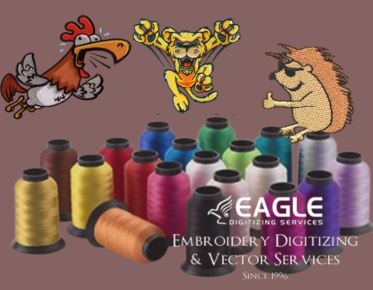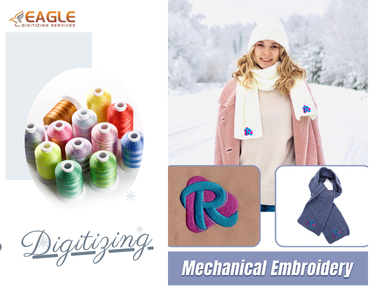Choosing the Right Needle Size for Embroidery
Embroidery is a craft that combines creativity with precision, and selecting the right needle size is crucial for achieving the best results. Whether you're a beginner or an experienced embroiderer, understanding how to choose the appropriate needle can make a significant difference in your work. In this guide, we'll explore the factors that influence needle selection and provide tips to help you make the right choice.
Understanding Needle Sizes
Needle sizes for embroidery are typically indicated by a number, with smaller numbers representing larger needles. The size you choose depends on several factors, including the type of fabric, the thickness of the thread, and the type of embroidery you are doing. For instance, a larger needle is often used for thicker fabrics and threads, while a smaller needle is suitable for delicate fabrics and finer threads.
Factors to Consider When Choosing a Needle
Fabric Type
The type of fabric you're working with is one of the most important considerations. Heavier fabrics like denim or canvas require a larger needle to penetrate the material without causing damage. Conversely, lightweight fabrics such as silk or organza need a finer needle to prevent snagging or tearing.
Thread Thickness
The thickness of the thread also plays a role in needle selection. Thicker threads require a larger needle eye to accommodate the thread without causing friction or breakage. If you're using a fine thread, a smaller needle will help maintain the integrity of the thread and the fabric.
Type of Embroidery
Different types of embroidery may require different needle sizes. For example, cross-stitch and tapestry work often use larger needles, while delicate work like needlepoint or silk shading may require finer needles. It's essential to match the needle size to the specific requirements of your embroidery project.
Common Needle Sizes for Embroidery
Here are some common needle sizes and their typical uses:
- Size 60/8: Ideal for very fine fabrics and threads.
- Size 70/10: Suitable for lightweight fabrics and fine threads.
- Size 80/12: A versatile size for medium-weight fabrics and threads.
- Size 90/14: Best for heavier fabrics and thicker threads.
- Size 100/16: Used for very heavy fabrics and thick threads.
Testing and Adjusting
Before starting your embroidery project, it's a good idea to test your needle and thread combination on a scrap piece of fabric. This allows you to see how the needle interacts with the fabric and make any necessary adjustments. If you notice any issues such as puckering or thread breakage, consider switching to a different needle size.
Expert Tips for Needle Selection
Consulting with professionals or experienced embroiderers can provide valuable insights into needle selection. Companies like Eagle Digitizing offer expert advice and services that can help you achieve the best results in your embroidery projects. Their team of skilled digitizers is well-versed in the latest techniques and can assist with everything from design to execution.
Exploring Advanced Techniques
As you become more experienced with embroidery, you may want to explore advanced techniques that require specific needle sizes. Techniques such as 3D puff embroidery or sequin embroidery can add depth and texture to your work, but they also require careful consideration of needle size and type. Eagle Digitizing specializes in these advanced techniques and can provide guidance on the best needle choices for your projects.
Conclusion
Choosing the right needle size for embroidery is a critical step in ensuring the success of your projects. By considering factors such as fabric type, thread thickness, and the specific requirements of your embroidery, you can select a needle that enhances your work and minimizes issues. As you continue to develop your skills, don't hesitate to seek advice from experts and explore new techniques that challenge and inspire you. What new embroidery techniques are you excited to try, and how will you choose the right needle for them?


